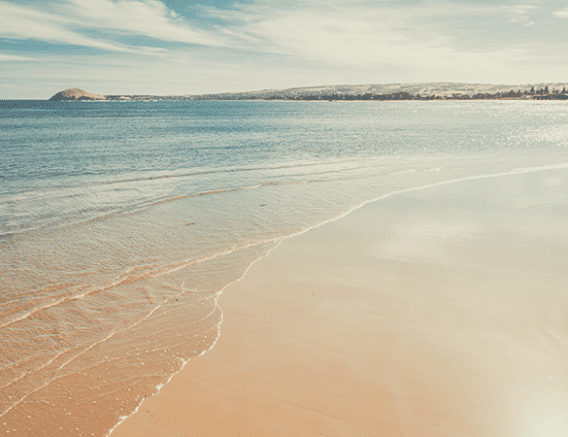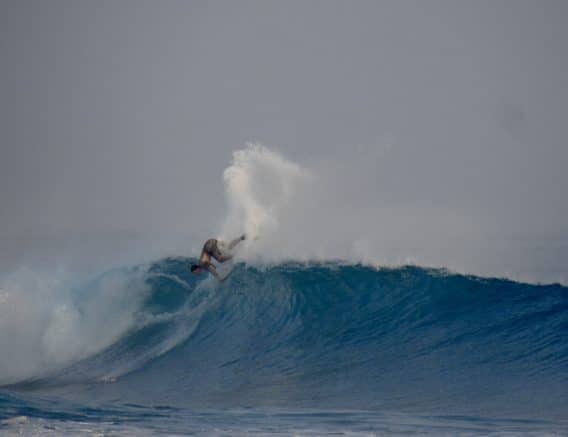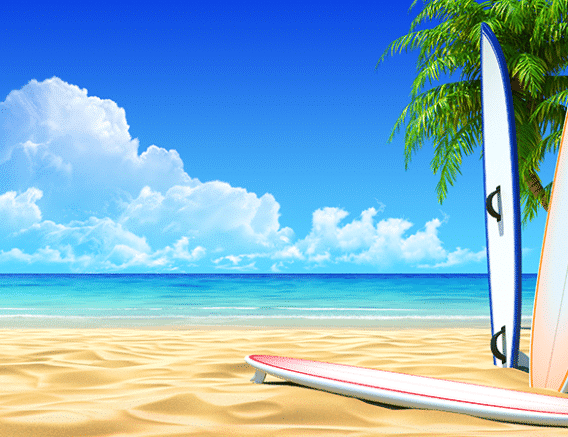Encuentro Beach: A Surfer’s Paradise in the Dominican Republic
Nestled along the stunning northern coastline of the Dominican Republic, Encuentro Beach is a hidden gem for surfers and beach lovers alike. This picturesque haven boa...

Slab Waves
Slab waves represent the pinnacle of extreme surfing. These monstrous, thick waves, breaking abruptly over shallow reefs or rocky ledges, differ dramatically from the smooth, rolling waves many surfers are used to. Known for their intensity, power, and unpredictability, slab waves are often synonymous with fearsome breaks like Shipstern Bluff (Australia), Teahupo’o (Tahiti), and The Right (Western Australia). To surf these beasts requires not only immense skill but also an understanding of the unique conditions that create them.
What Are Slab Waves?
Slab waves are defined by their sudden, steep rise and break. Unlike conventional waves that gently rise as they approach the shore, slabs emerge rapidly due to the abrupt, shallow underwater terrain they break over—often razor-sharp coral reefs or rocky outcrops. The shallow water beneath these waves causes them to “throw” violently, creating a hollow, heavy lip that slams down with immense force. This makes slab waves incredibly powerful and dangerous, with consequences for surfers who mistime their take-off or get caught inside.
What makes these waves unique is their thickness relative to their height. While a wave at Pipeline may be 10-12 feet tall, slab waves often have thick lips that create the illusion of a smaller wave but carry tremendous power due to their dense, voluminous nature.
Characteristics of Slab Waves
Abrupt Shape: Slabs often break in a vertical, sudden manner, offering a dramatic “ledge” that drops into deep barrels. This creates a near-instantaneous transition from deep water to shallow, making the wave highly unpredictable.
Shallow Reefs: The shallow water beneath slab waves adds to the danger, as surfers who wipe out may find themselves perilously close to jagged rocks or coral reefs.
Thick Lips: The lip of a slab wave is unusually thick and powerful, capable of tossing surfers with extreme force.
Unforgiving Impact Zone: Falling off a slab wave often means being thrown into a turbulent impact zone with violent currents and limited room to escape.
How to Surf Slab Waves
Surfing slab waves demands more than just technical skill; it requires an understanding of wave mechanics, timing, and an ability to remain calm under pressure. Here’s how to navigate these natural wonders:
Hazards of Surfing Slab Waves
The dangers of slab waves are significant, which is why only the most experienced surfers attempt them. Key risks include:
•Shallow Reefs: One of the biggest dangers of slab waves is the shallow, jagged reefs that sit just below the surface. A misstep can lead to serious injury.
•Wipeouts: Wiping out on a slab is far more dangerous than on a regular wave. The power of the lip and the abruptness of the break can toss a surfer with immense force, slamming them into the reef or pulling them into deep water.
•Limited Escape Routes: Many slab breaks occur in areas with minimal room for error. Getting caught inside can leave you with few options to escape, especially when dealing with fast-approaching sets.
Slab Surfing Spots in the Dominican Republic
While the Dominican Republic is better known for its smooth, rolling waves at places like Encuentro Beach and Playa Grande, there are also some challenging spots with slab-like characteristics for experienced surfers:
1.La Preciosa, Cabrera: Known for its powerful waves and shallow reef, La Preciosa can offer thick, fast-breaking waves similar to a slab, particularly during the winter swells. The break sits over a shallow reef, and surfers must be cautious of the sharp coral below.
2.Punta Las Marias: This spot offers a more localized slab wave during specific swell conditions. Though it’s not as consistently powerful as some international slabs, Punta Las Marias is known to throw heavy, fast waves over a rocky ledge, creating hollow barrels that break dangerously close to shore.
3.El Barco, Puerto Plata: Another spot where surfers can find slab-like conditions, especially during hurricane season, when the waves become larger and more unpredictable. The waves here break over a shallow reef, producing thick, steep walls of water that can barrel over, creating the feeling of a slab.
Surfing slab waves is not for the faint of heart. It requires an extraordinary blend of technical skill, physical fitness, mental fortitude, and respect for the power of the ocean. While the Dominican Republic is not primarily known for its slab waves, certain breaks like La Preciosa and Punta Las Marias offer thrilling, slab-like conditions that can challenge even the most seasoned surfers. Whether you’re an advanced surfer looking to take on the challenge or an observer appreciating from a safe distance, slab waves embody the raw, untamable beauty of the ocean.

Nestled along the stunning northern coastline of the Dominican Republic, Encuentro Beach is a hidden gem for surfers and beach lovers alike. This picturesque haven boa...

Video analysis is like the surfer’s secret weapon. It is a game changer for a bunch of reasons. Getting better/ Motor Learning: Surfing is all about skill, ba...

Surfing, once a male-dominated sport, has seen a remarkable transformation over the years with the rise of women breaking barriers and making significant contributions...

Surfing is not merely a sport; it is a way of life, a connection with the raw power of the ocean, and a dance with nature. At the heart of this thrilling activity lies...

For surfers, there's an almost magical feeling of riding a wave. To experience that perfect ride, timing is everything. Catching a wave at the right moment can make th...